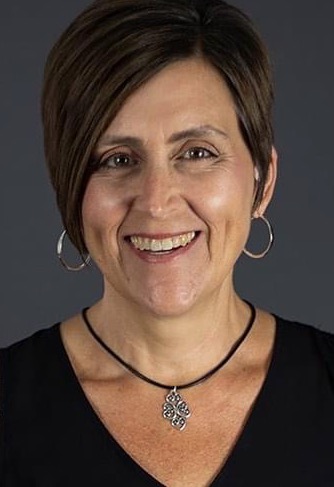
Connecting While Apart
By Kristine Wolfe, AOSA Teacher Educator
One of my favorite things about teaching music is seeing the look on the face of a student when they recognize a song that we have sung or played before. Beginning in Kindergarten, as students enter the music room, we sing this song to begin class:
Greetings, my friends!
Glad you’re here today!
Let’s get ready to
Sing and speak and play!
The melody is Canon #1a from page 91 in Music for Children, Volume I.1 Because it is elemental, it has many musical concepts that can be introduced in early grades and then developed further when returning to it in later years.
For the past several years, students would sing the song (A), listen to the song as I played it an octave higher on the piano (B), and then sing the song again (A). Now that we are in the midst of a pandemic, the contrasting B section is made up of social distanced greetings: 1. elbow bump, foot bump, wave to your friends, 2. spirit fingers, curtsy, salute to your friends, and 3. air hug, blow a kiss, bow to each other. Not only is it reinforcing our new-found ways to greet and "connect" with each other, it is active for students who may be sitting in the same place longer than anyone wants to. This activity works well for distance learning...and may plant an earworm for classroom use when singing is deemed safe.
Why do I use this piece and revisit it with third grade students on a regular basis? Simple: the melody is so joyful and the rhythm can easily be adapted to fit most text. (Remember that we have permission to adapt the examples in the original source material!) Since it’s familiar when we revisit it, the students can easily transfer it to a barred instrument with very little assistance. We sing the melody using text, a solfege ladder, body sol-fa, Curwen hand signs, and more. We discuss the form (aa’ba), we discover how simple the melody is to play...and then we play it! We play it phrase by phrase, we play it by type of instrument (metal, wood, etc.), we play by row, we play by pitch (high, low, etc.) and we even play solos. After we experience all of the possibilities, we play it in canon (2 part, 4 part, etc.). We come back to it later to discuss meter and play it in triple (as modeled in #1b) and adapt the rhythm as needed based on our text.
Here are a few more examples of text I have used for this same piece where we explored both #1a (in quadruple meter) and #1b (in triple meter). Some of these have been used as part of a performance based on a picture book. The gems in Music for Children, Volume I offer many opportunities for creation. I encourage you to lift them from the pages and explore the possibilities.
Snowmen at night,
Really quite a sight!
Doing just what snowmen do,
Snowmen at night.
~
Our time is done.
We’ve had some fun.
It’s time to go home
One by one.
~
Let’s take a trip,
On a pirate ship.
Wonder what adventures next
On a pirate ship.
~
Following stars,
Twinkling stars,
Silently gliding
Over the sea.
1. Carl Orff and Gunild Keetman, Music for Children, Volume 1, trans. Margaret Murray (London: Schott & Co. Ltd. 1976) p. 91
 Kristine Wolfe teaches PreK-6 Music in the Papillion - La Vista (NE) Community Schools. She is a member of the Great Plains Orff Chapter, currently serving as the Program Chair. Kristine is an Orff Level I Basic instructor and, in her free time, she enjoys playing oboe and recorder.
Kristine Wolfe teaches PreK-6 Music in the Papillion - La Vista (NE) Community Schools. She is a member of the Great Plains Orff Chapter, currently serving as the Program Chair. Kristine is an Orff Level I Basic instructor and, in her free time, she enjoys playing oboe and recorder.
Reverberations - September 8, 2020
.jpg)
